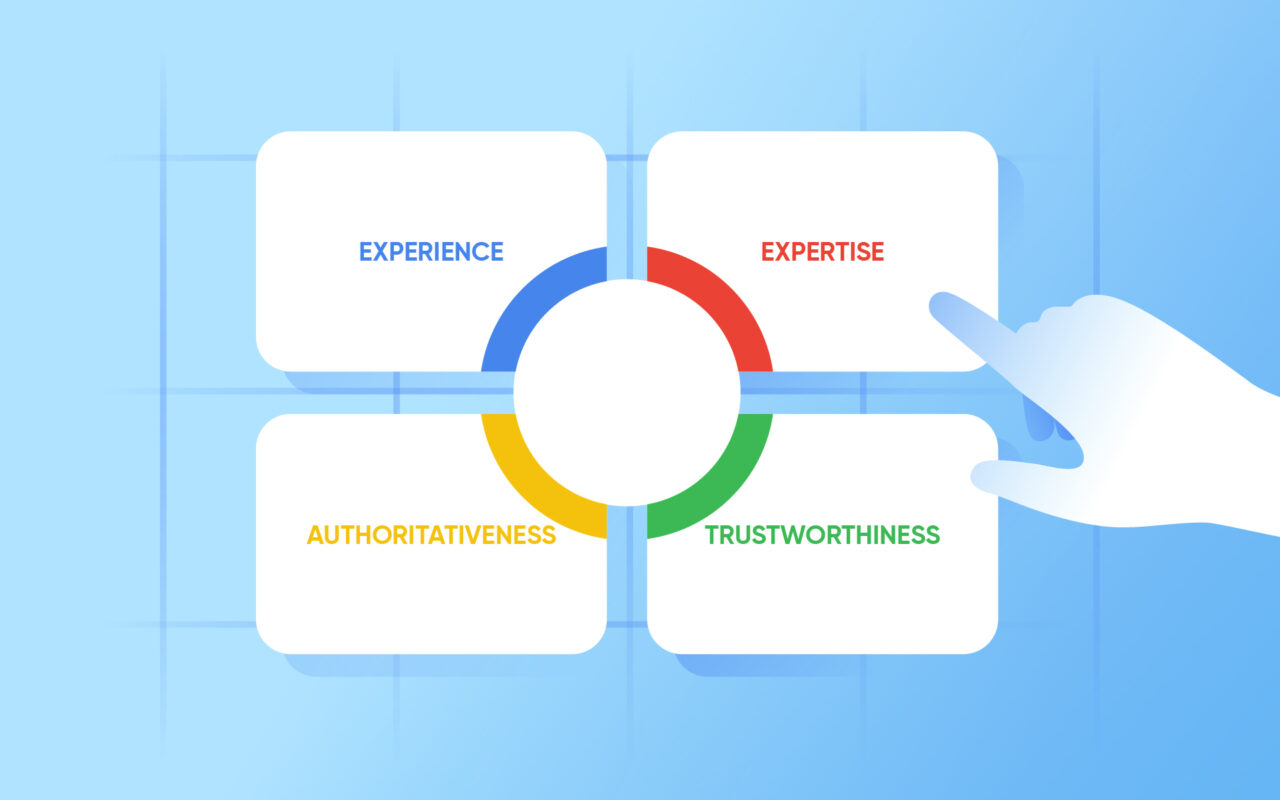Information Is Now a Commodity. Google Is Focused on E-E-A-T, and We Can See Why
Have you ever wondered why your digital content does not stand out? You might think it's because of the saturated market, the ever-changing SEO algorithms, or perhaps the design of your website. But maybe, just maybe, it's something more fundamental. Something rooted in the very essence of your content.

There is a thing called E-E-A-T. It's a concept that Google uses to evaluate the quality and relevance of web content. It stands for Experience, Expertise, Authoritativeness, and Trustworthiness.
The extra E, Experience, was added by Google in late 2022. It emphasizes the importance of firsthand or life experience in some topics. This concept has swiftly become the backbone of what quality content truly means in the eyes of Google.
Today, Google is heavily focused on E-E-A-T. Without E-E-A-T online content falls short. I will tell you why and what to do about it.
Table of Contents:
Why is E-E-A-T important?
How To Apply the E-E-A-T Principle in Your Content
Examples of Low-quality pages
E-E-A-T Vs. User-friendly and Engaging Content
How To Create User-friendly and Engaging Content
Ranking High on Google is NOT EASY
Why Is E-E-A-T Important?
The internet is full of content. There are trillions of pages. Every article, blog post, or guide is vying for attention. And E-E-A-T serves as a compass. It ensures that content is not only factually accurate but also comes from a source with real-world experience and expertise. High-quality content that aligns with E-E-A-T principles is more likely to rank higher in search engine results pages (SERPs), leading to increased visibility and traffic.

How To Apply E-E-A-T Principle in Your Content
1. Identify the purpose, type, and topic of your article
Is it a YMYL (Your Money or Your Life) topic that affects people’s health, happiness, or financial stability? If so, you need to demonstrate high levels of E-E-A-T to rank well.
2. Choose a topic that you have experience in
This means that you have done or witnessed what you are writing about. For example, if you are writing a review of a product, you should have used it yourself. If you are writing a guide on how to do something, you should have done it yourself.
3. Show your expertise and credentials
This means that you have the knowledge and skills to write about the topic. For YMYL topics, this usually requires formal education or qualifications. For non-YMYL topics, this can also include relevant life experience or everyday expertise. You can show your expertise by providing your bio, linking to your social media profiles, citing reputable sources, and using appropriate language and tone.
4. Establish your authority and reputation
This means that you are recognized as a reliable source of information on the topic. You can establish your authority by getting positive reviews, testimonials, ratings, awards, mentions, or links from other authoritative websites or publications. You can also make use of professional social media platforms like LinkedIn.
5. Build trust with your audience
This means your content is honest, transparent, and accurate. You can build trust by providing contact information, updating your content regularly, correcting errors or mistakes, disclosing conflicts of interest or affiliations, and using secure protocols (HTTPS) for your website.

Low-quality Pages Lack Appropriate Levels of E-E-A-T. Examples
- The content creator lacks adequate experience, e.g. a restaurant review written by someone who has never eaten at the restaurant.
- The content creator lacks adequate expertise, e.g. an article about “how to create a CRM” written by someone with no expertise in the subject.
- The website or content creator is not an authoritative or trustworthy source for the page's topic, e.g. law form downloads provided on a food blog.
- The page or website is not trustworthy for its purpose, e.g., a financial advisor's blog with outdated information.
E-E-A-T Vs. User-friendly and Engaging Content
E-E-A-T focuses on the credibility, authenticity, and depth of the content. Without the foundation of E-E-A-T, even the most user-friendly content can fall flat.
However, user-friendly and engaging content ensures that readers can easily navigate and comprehend the information you provide. It also captures and retains their attention.
Countless articles and resources are available at one's fingertips. Only content that offers a seamless experience and E-E-A-T stands out. Such content fosters trust, encourages repeat visits, and often leads to higher visits.

How To Create User-friendly and Engaging Content
Research Thoroughly: Before you start writing, conduct in-depth research. Use reputable sources such as academic journals, established news outlets, and expert interviews. This not only boosts your E-E-A-T score but also ensures that your content is accurate and up to date.
Use Clear and Concise Language: While it's essential to show expertise, it's equally important to make sure your content is accessible. Avoid jargon and overly complex language. Break up long paragraphs, use subheadings, and include images or infographics to make your content more digestible.
Optimize for SEO: While E-E-A-T is crucial, don't forget about other SEO best practices. Use relevant keywords naturally within your content, optimize meta descriptions, and use internal and external linking wisely.
Update Regularly: What's relevant today might not be tomorrow. Regularly review and update your content to ensure it remains current and accurate.
Include Author Bio: Always include a detailed author bio or social media profile. This will highlight the author's experience, qualifications, and any other relevant credentials. It's a direct way to showcase expertise and authority on the subject.
Prioritize Mobile Optimization: With a significant portion of users accessing content via mobile devices, ensure your website and content are mobile-friendly. This not only improves user experience but is also a ranking factor for Google.
Avoid Misinformation: Always fact-check your content. Spreading misinformation, even unintentionally, can harm your trustworthiness and authoritativeness in the long run.
Ranking High on Google is NOT EASY
While E-E-A-T is a foundational principle for creating content that Google loves, it's essential to remember one thing. At the heart of it all are the users. Prioritize their needs, provide value, and ensure a seamless user experience.
You not only need to meet E-E-A-T criteria but also create content that genuinely benefits your audience. And that is no easy task. Only a few people can say otherwise. Statistics show that 90% of content gets no traffic from Google!
See you in the next article.











